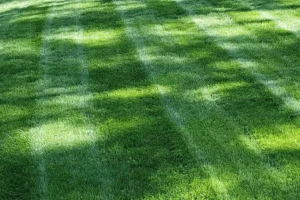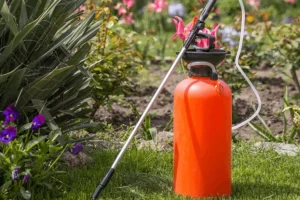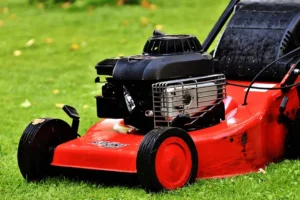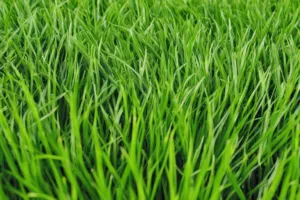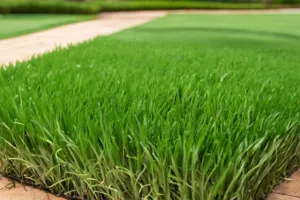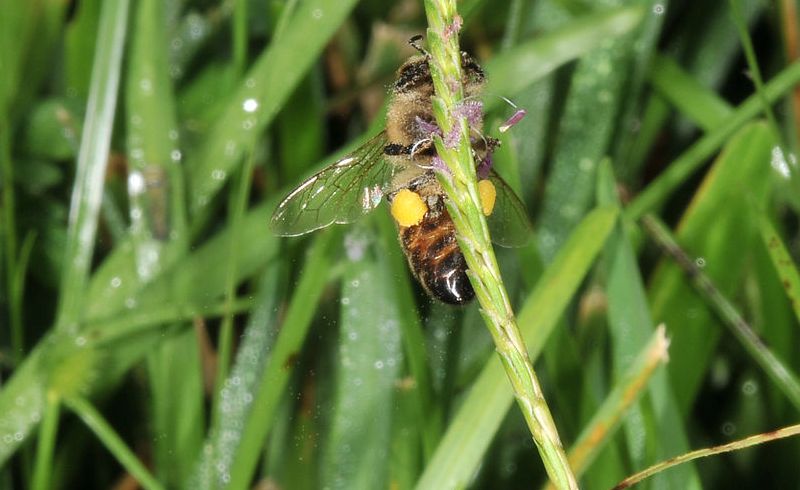
Introduction
The Rise of Centipedegrass in Florida
Florida has always been a gardener’s paradise with its warm climate and unique soil types. Among the many grass varieties that graced Florida lawns, one stands out for its resilience and beauty: Centipedegrass. Introduced over a century ago, this grass has become a favorite for many homeowners. Its adaptability and tolerance to Florida’s unique conditions and low-maintenance nature make it a top choice for those looking to have a lush, green lawn without constant upkeep.
But what makes Centipedegrass so unique? Why has it become such a beloved choice for Florida gardens? The answer lies in its unique characteristics, its history, and the benefits it brings to any garden it graces. Whether you’re a seasoned gardener or someone just starting, understanding the charm of Centipedegrass can help you make the best choice for your lawn.
Why It’s a Gardener’s Dream
Every gardener dreams of a lawn that’s beautiful and easy to maintain. Centipedegrass fulfills that dream. Its light green hue gives gardens a fresh and vibrant look. Unlike other grass varieties that demand constant attention, Centipedegrass is content with just the basics. It doesn’t ask for frequent mowing or heavy fertilization. Instead, it thrives in the simple pleasures of sunlight, occasional watering, and the warmth of Florida.
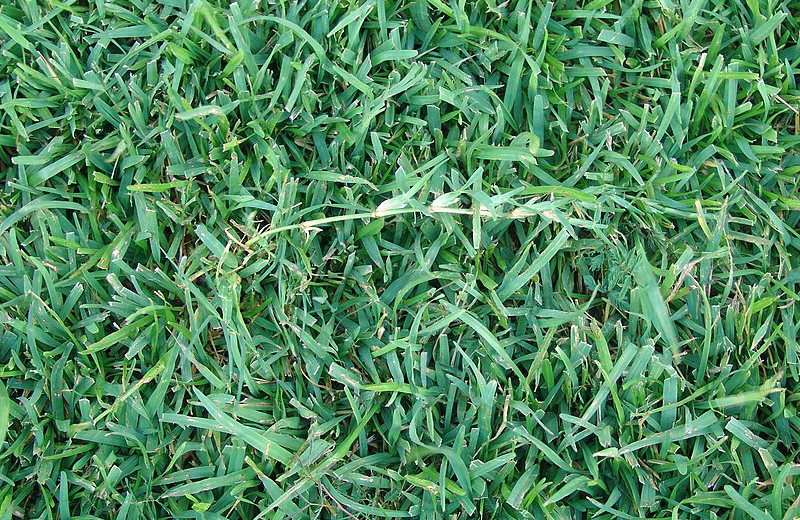
Moreover, for those who are environmentally conscious, Centipedegrass is a blessing. Its ability to thrive even in less fertile soils means you won’t be reaching for chemical fertilizers often. Its slow growth rate also ensures you use your lawn mower less, reducing your carbon footprint. In a world where sustainability is critical, choosing this grass is a step towards a greener future.
In the sections to come, we’ll dive deeper into the world of Centipedegrass, exploring its history, benefits, and how you can make the most of this beautiful grass variety in your garden. So, get ready to embark on a journey that promises a greener, more beautiful tomorrow for your Florida lawn!
A Brief History of Centipedegrass
From Southeast Asia to American Lawns
Centipedegrass has an intriguing origin story that begins far from the sunny shores of Florida. Imagine a grass so resilient and adaptable that it traveled from Southeast Asia to find a new home in the United States! Introduced in 1916, this grass quickly captured the hearts of American gardeners.
Its ability to flourish in diverse conditions made it a sought-after lawn choice, especially in the southern states. For the everyday gardener, this meant having beautiful grass that required minimal fuss. It’s no wonder that Centipedegrass quickly became a staple in many American gardens.
The journey of Centipedegrass is a testament to its adaptability and charm. While it might have started its life in the tropical regions of Asia, it found a perfect match in the climate and soils of Florida. Over the years, its popularity has only grown, with more and more gardeners choosing it for its unique blend of beauty and resilience.
Over a Century of Green Beauty
Centipedegrass has been gracing American lawns with its lush, green carpet for over a hundred years. But what’s truly remarkable is how it has stood the test of time. In the ever-evolving world of gardening, where new grass varieties are introduced frequently, Centipedegrass has held its ground. Its longevity speaks volumes about its suitability for Florida’s unique environment.
Gardeners and landscapers have come to appreciate its consistent performance year after year. Whether it’s the hottest summer day or chilly winter morning, Centipedegrass remains a reliable choice for those seeking a lawn that looks good in all seasons.
Its history is not just a tale of survival but one of thriving against the odds. As we look back, it’s clear that Centipedegrass has truly earned its place in the annals of gardening history, promising a green and vibrant future for many more years to come.
Characteristics that Make Centipedegrass Stand Out For Floridian Lawns
The Unique Look: Light Green and Lush
When you think of a perfect lawn, you might imagine a deep green carpet stretching across your yard. However, Centipedegrass brings a unique twist to this vision with its signature light green hue. This distinct color sets it apart from other grass varieties and gives gardens a fresh, vibrant appearance. It’s like having a touch of spring in your backyard all year round!
But it’s not just about the color. The texture of Centipedegrass is equally captivating. It’s okay; soft blades create a lush carpet underfoot, making it a pleasure to walk on. Whether hosting a backyard barbecue or enjoying a sunny afternoon with a book, Centipedegrass ensures your lawn looks inviting and comfortable.
Adapting to Florida: The Perfect Climate Match
Florida’s climate can be a challenge for many plants, but not for Centipedegrass. This grass variety has an innate ability to adapt to the state’s unique weather patterns, making it a top choice for Florida gardens. From the humid summers to the occasional cold snaps, Centipedegrass takes it all in stride.
- Drought Resistance: One of the standout features of Centipedegrass is its ability to handle dry spells. While regular watering is always beneficial, this grass can soldier on even when the rains are scarce.
- Acidic Soil Lover: Florida is known for its acidic soils, and guess what? Centipedegrass loves it! This means less fussing over soil pH levels and more time enjoying your beautiful lawn.
Low Maintenance: For Those Who Want Beauty without the Hassle
Every gardener dreams of a stunning lawn yet easy to care for. Centipedegrass delivers on this dream. Unlike some high-maintenance grass varieties that demand constant attention, Centipedegrass is content with the basics. This means fewer hours spent on lawn care and more time enjoying the fruits of your labor.
One of the joys of having a Centipedegrass lawn is the reduced need for mowing. Thanks to its slow growth rate, you won’t find yourself pulling out the lawn mower every weekend. And when it comes to fertilization, this grass is modest in its needs. A light feeding now and then is all it requires to thrive. For gardeners who want a gorgeous lawn without constant upkeep, Centipedegrass is a dream.
The Benefits of Choosing Centipedegrass
A Lawn That’s Kind to Your Wallet
Centipedegrass is not just a treat for the eyes; it’s also gentle on your pocketbook. This grass variety is known for its low maintenance requirements, which translates to savings in the long run. Think about it: fewer trips to the garden store for fertilizers, less frequent mowing, and reduced water bills due to its drought resistance. Over time, these savings add up, making Centipedegrass a cost-effective choice for homeowners.
Moreover, the initial investment in Centipedegrass is also relatively lower than some other grass varieties. Its ability to thrive in various soil types means you will save money on soil amendments. All these factors combined make Centipedegrass a budget-friendly option for those looking to have a stunning lawn without breaking the bank.
Eco-Friendly and Sustainable
In today’s world, sustainability is more than just a buzzword; it’s necessary. And Centipedegrass fits right into this eco-conscious landscape. Its modest water requirements mean you’ll use less of this precious resource, a boon in drought-prone areas. Additionally, its preference for low-fertility soils reduces the need for chemical fertilizers, leading to a reduced environmental footprint.
But there’s more! Centipedegrass’ slow growth rate means less mowing, translating to fewer lawnmower greenhouse gas emissions. Its natural resistance to many pests reduces the need for chemical pesticides. By choosing Centipedegrass, you’re not just opting for a beautiful lawn; you’re also making an environmentally responsible choice that benefits both your garden and the planet.
A Lawn That Stands the Test of Time
When you invest time and effort into your garden, you want lasting results. Centipedegrass delivers on this front. Known for its durability, this grass variety can withstand various challenges, from pest attacks to fluctuating weather conditions. Whether it’s a scorching summer day or a surprise frost, Centipedegrass remains resilient, ensuring your lawn looks impeccable year-round.
Its longevity is also a testament to its robust nature. With proper care, Centipedegrass lawns can thrive for years, reducing the need for frequent replanting or overhauls. For homeowners, this means a lawn that looks good and stands strong through the seasons, year after year. It’s a testament to Centipedegrass’ enduring charm and strength.
Navigating the Challenges
Facing the Iron Issue Head-On
Every plant has its quirks, and Centipedegrass is no exception. One of its unique traits is its sensitivity to high iron levels in the soil. You might wonder, “Why does this matter to me?” Excessive iron can lead to a condition called “iron chlorosis,” where the grass turns yellow due to a lack of chlorophyll.
But here’s the good news: this challenge is easily navigable with some know-how. Regularly testing your soil and adjusting its iron content ensures that your Centipedegrass remains that vibrant green we all love. Plus, there are plenty of products available that can help balance out the iron levels, ensuring your lawn stays lush and healthy.
The Thatch Hurdle: It’s Easier Than You Think!
Thatch might sound technical, but it’s simply a layer of organic matter accumulating on the soil’s surface. While a bit of thatch can be beneficial, providing insulation and protection, too much can be a problem for Centipedegrass. It can prevent water, nutrients, and air from reaching the grassroots. But fear not!
Managing thatch is a breeze. Simple practices like aerating your lawn and dethatching can make a difference. And the best part? These processes help with thatch and promote healthier, more robust grass growth. So, while thatch might seem like a challenge, it’s also an opportunity to give your lawn some TLC and watch it thrive even more.
Embracing the Shade: Finding the Sweet Spot
Centipedegrass loves the sun, but it’s also a bit of a shade-lover. This means that while it thrives in sunny spots, it also appreciates a bit of shade now and then. However, too much shade can lead to thinning and reduced vigor. The trick is to find the right balance. If trees or structures cast shadows on your lawn, consider trimming or pruning to allow the right amount of sunlight.
Alternatively, if specific patches of your lawn are perpetually shaded, consider integrating shade-loving plants or creating garden beds. It’s all about working with what you have and turning potential challenges into aesthetic opportunities for your garden.
Exploring Different Centipedegrass Cultivars
Discovering the Diversity of Centipedegrass
Centipedegrass isn’t a one-size-fits-all kind of grass. Just like roses come in various colors and sizes, Centipedegrass has different cultivars, each with its unique characteristics. For garden enthusiasts, this means there’s a world of options to explore, allowing you to pick the perfect fit for your lawn’s specific needs and aesthetic desires. Whether you’re looking for a particular shade of green or specific growth patterns, a Centipedegrass cultivar is likely just right for you.
Popular Picks for the Perfect Lawn
- Common Centipedegrass: As the name suggests, this is the most widely recognized and used cultivar. It’s the classic choice, known for its adaptability and resilience. This is your go-to if you’re looking for a tried-and-true option that’s stood the test of time.
- TifBlair: This cultivar is a newer introduction and has quickly gained popularity among gardeners. Why? It’s cold-tolerant, making it a fantastic choice for slightly cooler regions. Plus, its fine texture and rich color make it a visual treat.
- AU Centennial: Developed by turfgrass researchers, this cultivar is about improved resistance to pests and diseases. If you’ve had challenges with lawn pests, AU Centennial might be the solution you’ve been searching for.
- Oaklawn: This is the choice for those who love a dense, carpet-like lawn. Oaklawn is known for its thick growth, creating a lush green blanket that’s soft underfoot and a treat for the eyes.
Exploring the different Centipedegrass cultivars is like embarking on a gardening adventure. Each variety offers something unique, and the joy lies in discovering which one aligns best with your vision for the perfect lawn. Whether you’re a seasoned gardener or just starting, there’s a Centipedegrass out there waiting to transform your outdoor space into a green paradise.
Establishing Your Centipedegrass Lawn
Laying the Groundwork: Soil Prep is Key
Before you even think about planting, giving your soil some TLC is essential. Think of it as setting the stage for your Centipedegrass to shine. Start by testing your soil’s pH level. Centipedegrass prefers slightly acidic soil, with a pH of 5.0 to 6.0. If your soil isn’t in this range, don’t worry! Simple amendments like adding sulfur or lime can help adjust the pH. Next, consider tilling the soil. This helps with aeration and ensures any added nutrients mix well. With the proper groundwork, you’re setting your Centipedegrass up for a strong start and a thriving future.
Planting with Precision: Seeds, Plugs, or Sod?
When it comes to planting Centipedegrass, you’ve got options, and each has its merits. Let’s break it down:
- Seeds: Seeds are a great choice if you’re patient and love watching your lawn grow from scratch. They’re also cost-effective, especially for larger areas. Just ensure you water regularly to give them the best start.
- Plugs: These are small chunks of grass with roots attached. If you’re looking for a middle ground between seeds and sod, plugs are your answer. They establish faster than seeds but are more affordable than sod.
- Sod: Want instant gratification? Sod is your best bet. It’s grass that’s already grown and can be laid out for an immediate lawn. It’s perfect if you’re prepping for an event or if you’re the kind who loves instant results.
Consistent care is vital regardless of your chosen method, especially in the initial stages. Regular watering, avoiding heavy foot traffic, and eyeing for pests will ensure your Centipedegrass lawn establishes beautifully. Before you know it, you’ll have a lush, green space that’s the envy of the neighborhood!
Maintaining Your Green Oasis
Watering Wisdom: Quenching Your Lawn’s Thirst
Water is the lifeblood of any garden, and your Centipedegrass lawn is no exception. But here’s the thing: it’s not just about watering; it’s about watering right. Centipedegrass is a bit of a minimalist when it comes to hydration. It doesn’t need constant drenching. Instead, deep and infrequent watering does the trick.
This approach encourages the roots to grow deeper, making your lawn more resilient during dry spells. Aim for about an inch of water every week or two, depending on the weather. And here’s a pro tip: water in the early morning. It reduces evaporation, ensuring every drop counts, and prevents prolonged moisture on the grass blades, which can lead to diseases.
Mowing Magic: Keeping Things Trim and Tidy
A well-maintained lawn is a sight to behold, and mowing is pivotal in achieving that manicured look. But with Centipedegrass, there’s a golden rule: keep it short. Aim to keep the height around 1 to 2 inches. This gives your lawn a lush appearance and promotes healthier growth. Remember to keep your mower blades sharp. Dull blades can damage the grass, leading to a ragged look and making it susceptible to diseases.
Also, consider leaving the clippings on the lawn after mowing. They act as a natural fertilizer, returning essential nutrients to the soil. With the proper mowing practices, your Centipedegrass lawn will look impeccable and thrive, becoming the perfect green oasis you’ve always dreamed of.
Conclusion
The Centipedegrass Journey: From Seed to Splendor
Looking back, it’s truly remarkable to see the journey of Centipedegrass from a humble seed to a sprawling green canvas. With its unique characteristics and adaptability, this grass variety has proven to be a gardener’s delight. Whether you’re a seasoned landscaper or a newbie with a budding green thumb, Centipedegrass offers a chance to create a beautiful and resilient lawn. It’s not just about having a green patch in your backyard; it’s about cultivating a space where memories are made, kids play, and nature thrives.
Embracing the Future with Centipedegrass
As we look ahead, the future of gardening and landscaping is bright with Centipedegrass. Its low-maintenance nature and ability to withstand challenges make it a top choice for sustainable and eco-friendly lawns. Moreover, with the knowledge and insights shared in this guide, every gardener is equipped to nurture and cherish their Centipedegrass lawn.
So, here’s to sunny days, the soft touch of grass underfoot, and the joy of watching your green oasis flourish. With Centipedegrass, the dream of a perfect lawn is achievable and suitable at your doorstep. Cheers to the green adventures that await!

Bob Green, a passionate lawn care enthusiast with over two decades of landscaping experience, is this website’s proud owner. His vast knowledge of horticulture and dedication to helping homeowners maintain beautiful lawns are reflected in the valuable content he shares on his platform. John has always been interested in Agrostology.









